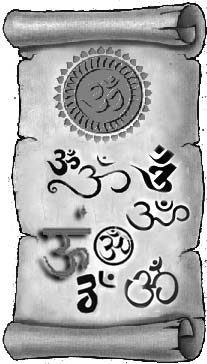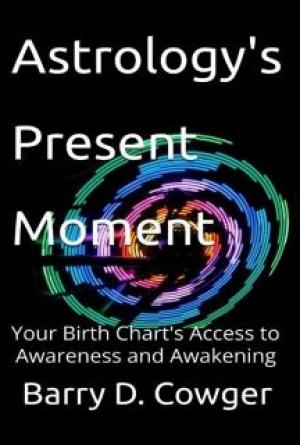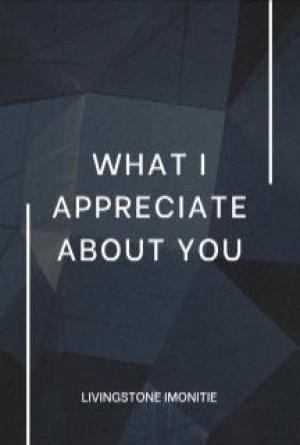not good, looks for another, again something doesn’t work. While the
problem lies inside — he has no right for a complete pleasure. Some-
times this contraction is motivated by a wish to «show himself» in the
bed, to prove his men potency. The result is the same — prostatitis.
196
Yogatherapy. Some principles of building therapeutic complexes
Fibromas, cysts and similar diseases are caused by the fact, that
some men get obsessed about a woman, sometimes there is a delusion,
which can be of two types — of oneself and of a man. In one case a
man gets obsessed, in another — a woman pretends that she is alright.
Muladhara
We have already naturally come to it, because infertility problems
have to do with Muladhara, not with Svadhisthana. Muladhara relates
to the coccyx, prostate gland, pelvis, large intestines, rectum. The typi-
cal disease from Muladhara is haemorrhoids. Usually it’s caused by
greediness. Greediness is overemanating one’s energy on things. What
is emanating of Muladhara? A person lets his energy field out and be-
lieves, that a thing belongs to him. He spreads his field and is holding
all things by it. I have one friend who suffers from haemorrhoids. He
says that as soon as he gets a new attack of haemorrhoids, he throws
something away, and immediately feels better. Greediness causes vari-
ous problems with intestines, sometimes to constipations.
And vice versa, not holding the function of Muladhara, problems
with this chakra can cause diarrhoea, although usually the reason is in
Manipura. It’s the incapacity of Manipura to «digest» energies. Mulad-
hara is responsible for material things, the element of Earth. To Mu-
ladhara relate problems of bad teeth, fragile bones, sometimes arthritis,
arthrosis etc. Arthritis, arthrosis is a joint tissue involvement, caused by
such a purely Muladhara feature as stubbornness — a person can’t give
in his principles.
Muladhara is responsible for trombophlebitis and other diseases
of dense blood, which is an excess of Earth in the body. Muladhara is
responsible for hypersensitivity. It can be the opposite — you point at
someone, and he’s feeling, where exactly you pointed. This is Mulad-
hara’s weakness. The element of Earth stabilises physical, etheric and as-
tral bodies. Earth element is present on the physical, etheric and astral
planes.
I had patients — yogins, who were practicing for a long time
and frustrated themselves Muladharas. Muladhara needs material pos-
sessions, safety. «My home is my fortress» is the image of Muladhara
person. Instead they said «We are yogins, we don’t need anything, the
material world is not for us» and threw away everything from their
homes, stopped taking care of their lives. In other words, a person has
completely refused all Muladhara emanations. First they got a syn-
drome of hypersensitivity, and then started losing their teeth.
NOTE. That I always say about reasons causing illnesses, as about possible
ones. With every person you must look for his particular reasons.
197
. Safronov. Yoga: Physiology, Psychosomatics, Bioenergetics
Rehabilitation of field’s
integrity and chakra
stabilisation
Therapeutic complexes of asanas
Basing on the chakra conception of diseases described above, we
can understand the principle of building a therapeutic complex. Such
complex has for a goal «smoothing» of the field, energizing depressed
chakras and sadation (removing the excess of energy) of the excited
ones. If a chakra is excited because of its rigidity and the accumulated
non-realized energy, one have also to work with the situation on the
astral plane, i.e. to use astral techniques in asanas — to moan, to re-
act one’s pain and so on. The next step is to cleanse channels in the
etheric plane. The criteria of successful practice are various sensations:
pricking, a feeling like numbness, vibration, feeling of the energy, lib-
erating from the respective zone. After that you can start working di-
rectly with chakras.
Note that, if chakra is depressed, at the respective level of the
etheric plane there will be a «hole» ahead and a «bump» on the back.
This means, you need exercises that work with both of them. The gen-
eral principle of pumping the hole to a bump is the same that we used
in common complexes: the energy moves from the strained zone to the
stretched one. In order to change a hole into a bump you need some
stretchings in the zone of the hole and some muscle strains in the zone
of the bump.
If a chakra is depressed, to stimulate it, i.e. to fill it from the front,
you should do some anterior-stretching exercises for this chakra. It can
be Bhujangasana or Ushtrasana with an accent on the needed chakra.
If your chakra is excited, you have a «hole» on the back and a
«bump» ahead, so you have to do some bending exercises, «squeezing»
the excited etheric zone.
As it was already said in the chapter about strengthening poses,
overworked chakra becomes loose, i.e. it easily loses energy. Especially,
if a person didn’t work on his behavioural reasons of the illness, didn’t
take off his «tails». In order to make energy stay in the, pumped «hole» —
no matter, in the front or back part of the body, — it should be fixed by
strengthening asanas for this zone.
The effect from asanas is fixed by rhythmic breathing and by oth-
er pranayamas. In the case of depressed chakras pranayamas should
198
Yogatherapy. Some principles of building therapeutic complexes
be done before the therapeutic complex to attract additional energy to
the body. It’s good to do such toning pranayamas as Bhastrikas. Ide-
ally, breathing you involve muscles of the problem zone. If you work
with the excited chakra, it makes sense to do a full yoga breath in the
relaxed state after a complex.
Thus a minimum therapeutic complex, aiming stabilisation of
chakra, contains three exercises: stretching, firming and pranayama.
This set should be repeated several times in the row at one pace.
The effect from this set can be slightly increased, if you add a piv-
oted pose accenting on the zone, you are working with. Pivoting poses
enhance the energy flow, that’s why they can be useful for both de-
pressed and excited chakras.
In general all possible illnesses, caused by osteochondrosis, in
the neck, thorax or lower back (radiculitis), mostly are cured by Artha-
matsiendrasana and other pivoted poses (on conditions that the spine
keeps the right posture).
WARNING! The contrary is also true. Arthamatsiendrasana with the
stooping back causes osteochondrosis. And that is very quickly. It’s ex-
plained by traumatising of intervertebral disks by the simultaneous pivot-
ing and pressing (physically), and by energy stuck in the stooping area
(energy level). In less serious cases, with the chakra rigid or loose, but yet
neither depressed nor excited, less exercises can be enough. In this case the
minimum complex is as follows. For a loose chakra: a strengthening pose
and an intensive pranayama (Bhastrika) — to calm down the excessive
tension (if you succeeded in achieving it). For a rigid chakra — a stretch-
ing pose with the deep (with Muladhara set-up) rhythmical breathing with
emotional reacting (moaning) and a smooth breathing to redistribute the
energy, liberated from the block.
Chakras stabilisation by breathing
Chakra’s depression or excitation influence on how intensively we
inhale and exhale by the respective zone. Thus, if a chakra is depressed,
the person has a tendency to make a deeper exhalation — as if he
were getting rid of the air. The example of it can be someone, sighing
with his chest, when he has a breached Anahata (i.e. being in depres-
sion). This point of view is proved by the opinion of Anatoliy Petrovich
Zilber, professor, MD: «...the most of «breathing chronics» especial-
ly with prevailing obstructive1 disorders (hampering the air pass —
comment of Safronov) have a breathing pattern with an active inhalation,
whereas it needs to be passivated».
1 Such diseases, like bronchial asthma, are usually caused by chakra’s depression.
199
. Safronov. Yoga: Physiology, Psychosomatics, Bioenergetics
On the contrary a person with the excited chakra has a tendency
to a deeper inhalation, as if he didn’t want to let the air go.
The contrary is also true: chakra can be stabilised by changing the
habitual breathing pattern, i.e. by activising the inhalation and passiv-
ating the exhalation for a depressed chakra and passivating inhalation
and making more active the exhalation for an excited one. Of course,
the most significant effect will be achieved, if you work with breathing
muscles at the level of the problem chakra.
The easiest way to use this method is by practicing rhythmic
breathing, but it can also be done with any pranayama, including in-
tensive ones.
Affecting
meridian system
by yoga exercises
How it was already said, asanas influence not only on our vis-
cera, but also on the system of musculotendinous meridians (see Ap-
pendix 1). The localisation of meridians is so that they often come
quite far from zones, on which they influence. That’s why many asa-
nas make an indirect impact on organs, physically not involved in
them. For example, sarpasana stretches the stomach meridian, pada-
hastasana — the one of the bladder, all pivoted poses — meridians
of gall-bladder.
Like chakras, every meridian can be in an «excessive» (excited)
and «insufficient» (depressed) state1. In the first case the pain symptom
appears when you squeeze the meridian, in the second — when you
stretch it.
Stretching meridians, we stimulate them. Basing on this fact and
knowing main principles of acupuncture, you can make complexes for
a precise treating of chosen organs.
1 For more details about excessive and insufficient aspects of meridians and organs see a
classic monograph of Tabeeva D. M. «Manual of reflex acupuncture». Of course this theory
is a view of Chinese classic doctors of the balance of ANS branches, while tables given by
Tabeeva is a detailed and more ancient variation of Wein tables.
200
Yogatherapy. Some principles of building therapeutic complexes
Harmonisation
of ANS balance
by asymmetric types
of breathing and asanas
Almost all basic asanas and pranayamas equally influence on Ida
and Pingala, are symmetric in their kind and presume that a practitio-
ner is also symmetric, though most of people are not (remember your
last visit to photographer: «Sit straighter, you shoulder up, your chin
up...»).
The disbalance of ANS branches is also seen in body’s asymmetry.
Because sympathetic and parasympathetic ANS branches are related to
Ida and Pingala, which are projected on the right and left nostril, their
disbalance at the level of any chakra results in the fact, that people uncon-
sciously take asymmetric poses, thinking that they sit still and straight.
The main principle of how subtle bodies project on the physical is
that a person are usually closing the zone, which is breached and lacks
energy. It concerns not only bending ahead (stooping in the respective
zone), but also all possible unconscious lateral bendings. For example, if
a person lacks for energy in the left channel at the level of Vishuddha,
he’ll be always looking a little bit to the left, and the same with the right
side; lacking for energy in one of the channels in Anahata, he’ll slightly
drop one shoulder; in Svadhisthana — he’ll throw ahead one hip etc.
The uneven distribution of energy can be seen by asymmetry of
the feet. There is a law of «accumulation of mistakes»: the further from
the source, the better you see all initial mistakes. Ida and Pingala go
from the top down, so the more down, the more obvious is the asym-
metry. It explains, for example, why some people can easily sit in one-
sided half-lotus, and can’t change the leg for another side.
The most common problem is an unconscious turning of the head,
which has to do with the excessive «kha» (right) and «tkha» (left) pet-
al of Ajna. Once more, a person himself thinks he’s sitting still and
straight.
The contrary is also true: this or another ANS branch can be acti-
vated by changing the symmetry of the pose and by changing the bal-
ance of breathing intensity by different nostrils. For examples, sympat-
ics can be recommended to do breathing exercises not in a common
position, but turning their head slightly to the right, i.e. activating the
left channel. They can also make longer stays in right-sided poses (where
the head is turned to the right), like sarpasana, Arthamatsiendrasana etc.
201
. Safronov. Yoga: Physiology, Psychosomatics, Bioenergetics
Pivoting our body at the level of a chakra, we can influence
quite precisely on our body. Doing asymmetric pranayamas, like Aka-
palabhati, you can breathe with just one nostril.
Some Indian sources recommend activating the needed type of
breathing by putting a cotton tampon in one nostril, doing exercises,
but I personally think, this method is too extreme and can be hardly
recommended as therapeutic.
The asymmetry principle can also be used in doing asanas. For
example, if a person has an active left channel, he can be advised to do
yoga-mudra not straight, but with a slight (10–15º) turning of the body
on the left side. Although even a conscious straightening in asanas, dis-
torted by the pathologic asymmetry of the channels, already gives a cer-
tain harmonising effect.
Awareness is the main clue to yoga and it’s even more true for
yoga-therapy.
202

YOGA
AND NUTRITION
Probably there is no other subject that would be so intricate
and contradictory, as the healthy nutrition. On the one hand (and it
can be proved by one’s own experience), nutrition influences great-
ly on our physical and emotional state. On the other, it would take
many pages just to enumerate all existing «healthy diets». The sad-
dest thing is that most of them are contradictory. Moreover I know
many cases, when a diet which was good for one person, bringing
him health and strength, turned out to be very harmful for another.
Apparently, people are indeed different and should eat differently.
So a single universal system of nutrition for everyone doesn’t exist.
However there are some principles, basing on which one can build
his own diet.
Principles of nutrition
of all bodies
As it was already said, yoga distinguished eight human bodies,
four of them being «mortal», collapsing after human’s death, have to
be fed.
Physical body lives on fats, proteins, carbohydrates, microelements,
vitamins and on other substances, which must be well-balanced.
Etheric body lives on the etheric energy, in particular, from
food. To be rich in etheric energy, food must be «alive», i.e. as natu-
ral as possible, being as less processed and stored as possible. For
example, greens, grown in one’s own garden without chemicals, are
more alive, than «hydroponics» ones. Fresh meat is more alive, that
the one that’s been frozen, and even more than the canned one (abso-
lutely dead product). The degree of «life» in a product can be defined
203
. Safronov. Yoga: Physiology, Psychosomatics, Bioenergetics
by seeing the size and quality of its etheric — alive products usually
have it bigger and denser. There is an easier way to see it. Alive
products go bad slower, than the same dead ones (if they weren’t
specially processed — in which case they can’t be taken at all). For
example, greens, picked from one’s own garden can stay fresh for
2–3 days, while «hydroponics» look faded by the same night —
because they don’t have much etheric.
If etheric body is underfed, it gets exhausted, its vitality falls,
and the person becomes sickly. In my opinion, such problems of the
modern civilisation as the chronic fatigue syndrome, allergy — are all
results of underfeeding etheric body.
Astral body is nourished by impressions, i.e. by tastes. Once
dieticians made a test: feeding a person by a well balanced, but
one-taste food. So the volunteer became ill, because his astral body
wasn’t nourished. That is why mankind throughout its history was
paying so much attention to the taste of the food. That’s why the
restaurant food, filled with astral bodies of the personnel, specifi-
cally decorated, costs more, than the home one (although the home
one tastes better).
There is food with just an astral component and no physical and
etheric one, like for example, spices, flavour additives, beverages like
«Coca-Cola», derived chemically.
Understanding principles of nutrition of the bodies explains one
of the roots of another serious problem of nowadays — the obesity. An
average city dweller has no bright and various impressions, so he is
emotionally hungry. One of the ways to satisfy this hunger is food, but
it turns out that food has not only astral, but also a physical compo-
nent... From this we can conclude that one of the ways to fight obe-
sity is to fill one’s life with good and diverse impressions. Better not
«canned» (from TV).
Mental body lives on thoughts and ideas. «Knowledge is food»
says «Siva sutra». That’s why humanity continuously creates new dish-
es (as if the old ones weren’t enough), and the most expensive one in
the restaurant is «the chef’s special». These dishes contain mental ener-
gy, the energy of creativity. Nevertheless mental body nourishes mostly
not by food, but with ideas and information.
204
Yoga and nutrition
The principle of food’s cor-
respondence to the consti-
tutional type
As it was already said, different people should eat differently.
Already the laws of Manu, representatives of different casts were ad-
vised to have different diets and restrictions in eating. One of the sys-
tems, helping to choose one’s own diet is the Ayurvedic system of
three doshas.
Dosha — is one of the basic principles of Indo-Tibetan medi-
cine. Vata, pita, kapha — Wind, Bile and Phlegm — are three basics
of the human body. The balance of these doshas determines the con-
stitutional type of a person. Knowing one’s type you can adjust your
way of life, your diet, individual practice, in order to achieve a per-
fect balance. Indo-Tibetan medicine believes that vata appeared due
to the merging of Wing (vayiu) and the Ether (akasha), pita — from
Fire (agni) and Water (apo), kapha — from Water (apo) and Earth
(pritkhvi). The prevalence of dosha, up to the percent ratio, can be
determined by person’s constitutional type. Ayurveda has specific diet
recommendations for every prevailing dosha.
The principle
of using gunas
It’s well known, that Indian tradition was using three basic states
(gunas), in which every system, including a man, can be. These states
are called sattva, rajas and tamas.
Sattvic are fresh fruit, vegetables, greens, couched grain, fresh
natural dairy products, natural (not chemical) sweets.
Rajas are spices and flavours, spicy food, fresh steamed meat,
some types of alcohol (high quality cognac, tequila).
Tamastic are all canned products, roots (like potato), meat, fat, al-
cohol like beer etc.
Eating products from either group puts you in a state, corre-
sponding to a guna. Some Indian texts, especially religious ones, recom-
mend only sattvic food, but there can be life situations, where not sat-
tva should be prevailing. For example, active efforts need a lot of rajas.
Sometimes after too intensive spiritual practices and physical activity
one needs to «get back to Earth», and this can be done by tamas.
205
. Safronov. Yoga: Physiology, Psychosomatics, Bioenergetics
You should also remember, that person’s belonging to a certain
varna also determines his best diet. Thus the prevailing guna in brah-
min’s nutrition (meaning that he has an occupation, corresponding his
caste), should be sattva, for kshatriya — rajas, for vaishya — rajas and
tamas and for shudra — tamas.
The structure of nutrition also differs by castes. Hence, brahmin
should eat a little, but various food, while shudra should eat a lot.
The principle
of time and place
Our body is a result of many millions of evolution. In this evolu-
tion we adapted ourselves to eat according to seasons of the natural
Sun cycle. Hundred years ago refrigerators were invented along with
other advanced methods of storage, and for the first time the diet has
become independent from the season, but our body is still used to it.
That’s why it’s better to take for a basis of your nutrition products, that
nature of your region is giving at the present season. If it’s spring, you
should eat greens, if it’s summer — berries, vegetables, fruit, autumn —
grains and roots, winter — meat dishes. It’s also important, because
«alive» products that you eat are directly connected to their «rela








